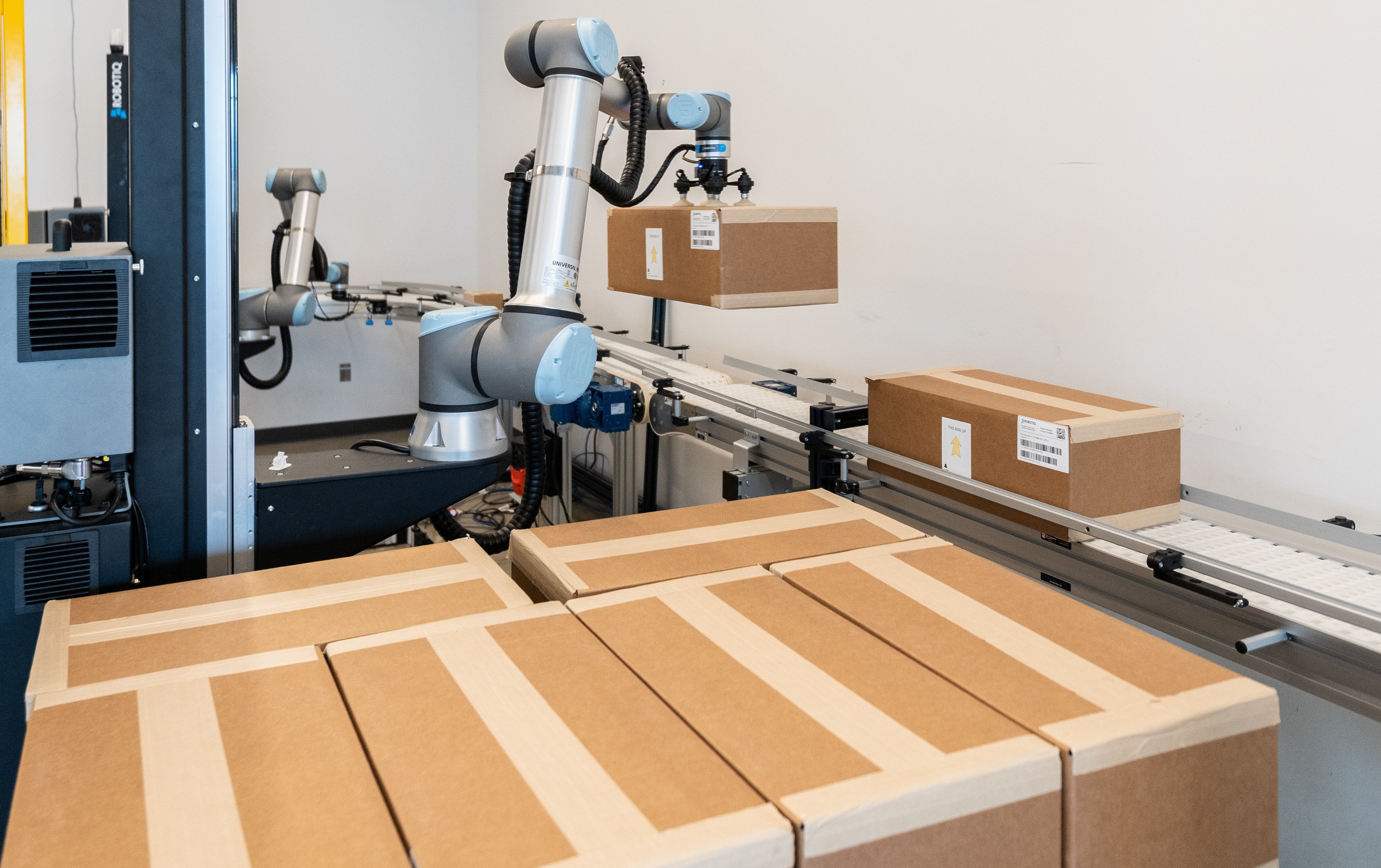6 Tips for Balancing the Robotics and Humans on Your Team

Posted on May 09, 2018 7:00 AM. 4 min read time
While some view the emergence of Industry 4.0 and the latest innovations in computing as the next big revolution in modern business, it's more of a transitory state.
You might have finally come to understand and embrace Industry 4.0 and all it has to offer, but don't get too comfortable — Industry 5.0 is already on its way.
What is Industry 5.0?
If Industry 4.0 marks the initial integration of humans and robotics in the workplace, then Industry 5.0 marks its climax.
However, the next phase is more than that. It combines advanced functionality through the Internet of Things (IoT), next-gen artificial intelligence (AI) and machine learning to create a team-based environment of humans and robots alike.
There are significant benefits in placing cobots — collaborative robots — alongside human workers, but there are challenges, too.
Some of the biggest hurdles come in balancing the roles they play, optimizing their combined productivity and ensuring humans feel comfortable with their robotic partners. Those who do so effectively will be well-prepared when Industry 5.0 finally makes landfall.
.png?width=800&height=450&name=Schnitt_v3.00_02_22_12.Standbild017%20(2).png) A collaborative robot cell at a beyerdynamic facility in Germany
A collaborative robot cell at a beyerdynamic facility in Germany
1- Offer promotions whenever possible
Next-gen robots can fulfill nearly every possible role in today's workplaces, from office environments to manufacturing facilities. Although this is a cause for concern, the outlook isn't as dire as some believe.
Instead of filling the better, higher-paying jobs with cobots, offer promotions to your current workers whenever possible. You can still assign robots to the more menial jobs.
They won't complain at all, and your human employees will appreciate their new status and increased compensation.
2- Transition employees to customer service roles
Business in the 21st century is all about customer service — and even that is changing. Today's customer service is more about giving the customer exactly what they want as opposed to telling them they're right. Customization is driving customer service from this point forward.
This is an area that robots — and even cobots — can't accommodate. Not only do customers want to speak with live human beings, but many of them also want the individualized and personalized service that isn't available in current-gen robots.
3- Recognize your employees' contributions and achievements
Employee recognition programs are a great way of showing your appreciation for a job well done. They're useful in environments that don't include any robots or cobots at all, but they're even more effective in a workplace that is shared with next-gen technologies.
Such programs also give you the chance to establish role models among the workforce.
Although your managerial staff typically fills these roles, some employees — particularly newer workers — might be intimidated by the thought of approaching a senior-level manager.
This gives them another channel for asking questions and voicing their opinion.
4-Provide IT training and education
It's easy to see how some workers feel threatened by the rise of workplace automation. Those who aren't tech-savvy in the first place likely don't understand the full scope of what's happening, and they're bound to react negatively.
To avoid this, make sure your entire staff is educated and, whenever necessary, trained in the type of cobots and software systems you use.
Not only will this help them maintain their productivity in the future, but it also ensures they're working with your cobots safely and efficiently.
5- Use cobots to complement jobs instead of replacing them
Instead of eliminating or replacing a human worker, many cobots help boost productivity. The Associated Press uses AI-powered robots to produce boilerplate content — which frees up real journalists to cover the actual news stories they provide.
CaliBurger, a popular fast food chain, uses robots to flip burgers. Humans step in to prepare orders as necessary.
There are many uses for robots and cobots in industrial settings, including warehouses and factories, but they aren't limited to these environments. Feel free to think outside the box, and you might come up with the next big idea in collaborative robot innovation.
6- Promote a strong workplace culture
Don't forget about your workplace culture. It's easy to let it slide — especially when you're integrating robotics into the workforce — but it does a lot for strengthening employee morale and driving productivity.
A strong workplace culture also lets you introduce cobots in a nonthreatening manner. Instead of worrying about losing their jobs, your employees can focus on learning these new systems and working with them instead of against them.
Embracing the trend of cobots in the workplace
Introducing cobots to the workplace is never an easy task. It becomes even more complicated when they're used outside of a factory or warehouse setting — as is the case with many next-gen cobots.
It's easy to see this expansion as a negative trend, especially if you don't properly understand the technology or the usefulness of a combined human-robotic workplace, but robots are here to stay.
Business owners who want to remain competitive may have no other choice but to embrace robotics in the workplace — regardless of what that place may be.








Leave a comment